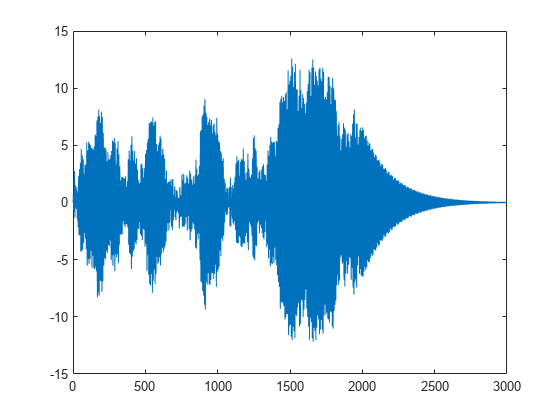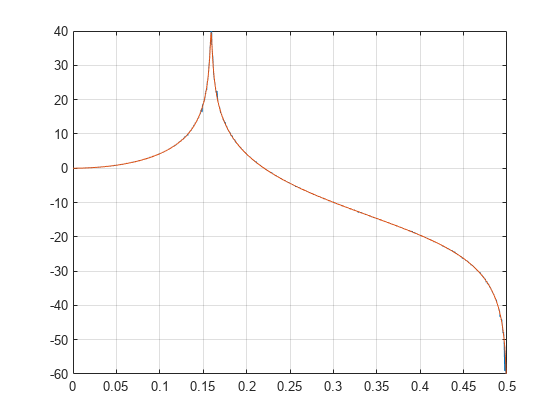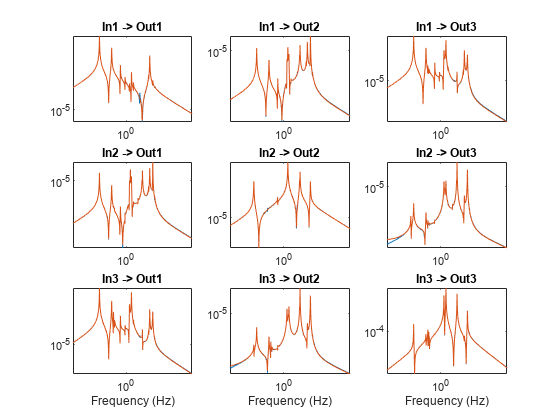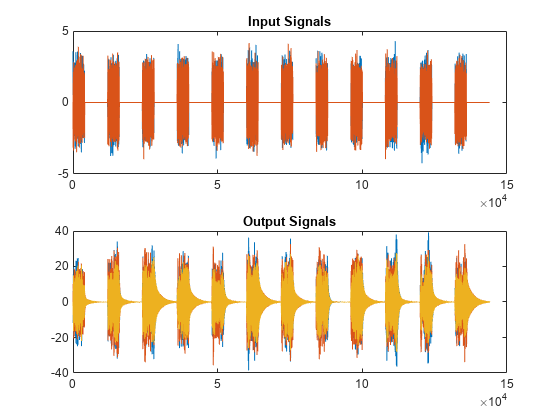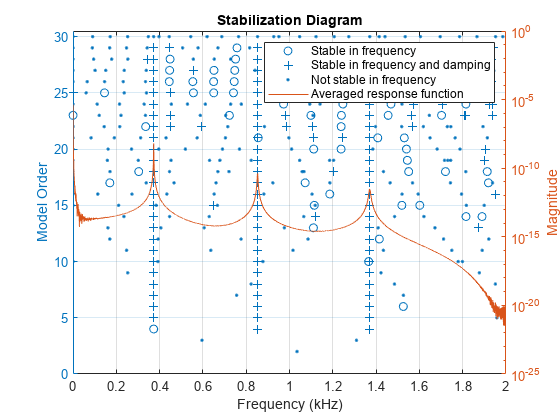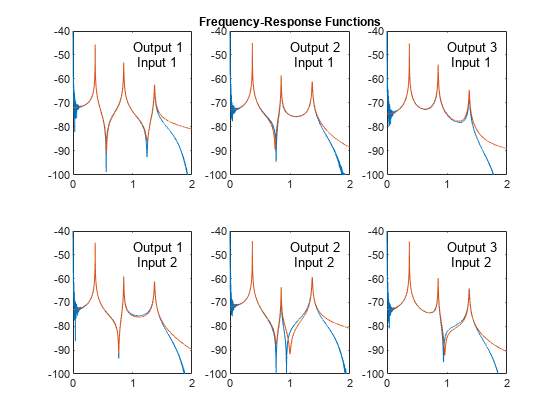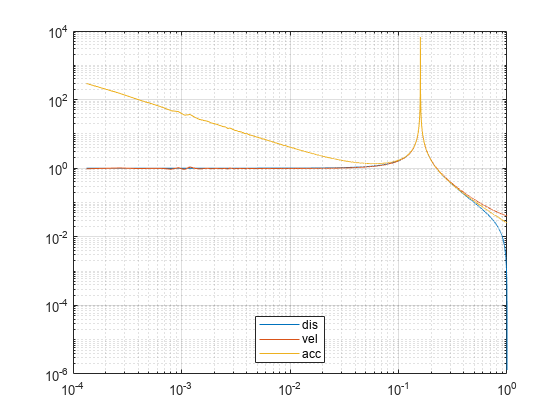modalfit
Modal parameters from frequency-response functions
Syntax
Description
fn = modalfit(frf,f,fs,mnum)mnum modes of a system with
measured frequency-response functions frf defined at frequencies
f and for a sample rate fs. Use
modalfrf to generate a matrix of
frequency-response functions from measured data. frf is assumed
to be in dynamic flexibility (receptance) format.
[___] = modalfit(
estimates the modal parameters of the identified model sys,f,mnum,Name,Value)sys. Use
estimation commands like ssest (System Identification Toolbox) or tfest (System Identification Toolbox) to create sys starting from a measured
frequency-response function or from time-domain input and output signals. This syntax
allows use of the 'DriveIndex',
'FreqRange', and 'PhysFreq' name-value
arguments. It typically requires less data than syntaxes that use nonparametric
methods. You must have a System Identification Toolbox™ license to use this syntax.
Examples
Input Arguments
Name-Value Arguments
Output Arguments
Algorithms
References
[1] Allemang, Randall J., and David L. Brown. “Experimental Modal Analysis and Dynamic Component Synthesis, Vol. III: Modal Parameter Estimation.” Technical Report AFWAL-TR-87-3069. Air Force Wright Aeronautical Laboratories, Wright-Patterson Air Force Base, OH, December 1987.
[2] Brandt, Anders. Noise and Vibration Analysis: Signal Analysis and Experimental Procedures. Chichester, UK: John Wiley & Sons, 2011.
[3] Ozdemir, Ahmet Arda, and Suat Gumussoy. "Transfer Function Estimation in System Identification Toolbox via Vector Fitting." Proceedings of the 20th World Congress of the International Federation of Automatic Control, Toulouse, France, July 2017.
Extended Capabilities
Version History
Introduced in R2017aSee Also
modalfrf | modalsd | n4sid (System Identification Toolbox) | tfest (System Identification Toolbox) | tfestimate
Topics
- Modal Analysis of Identified Models
- System Identification Overview (System Identification Toolbox)
- System Identification Workflow (System Identification Toolbox)
- Supported Continuous- and Discrete-Time Models (System Identification Toolbox)

